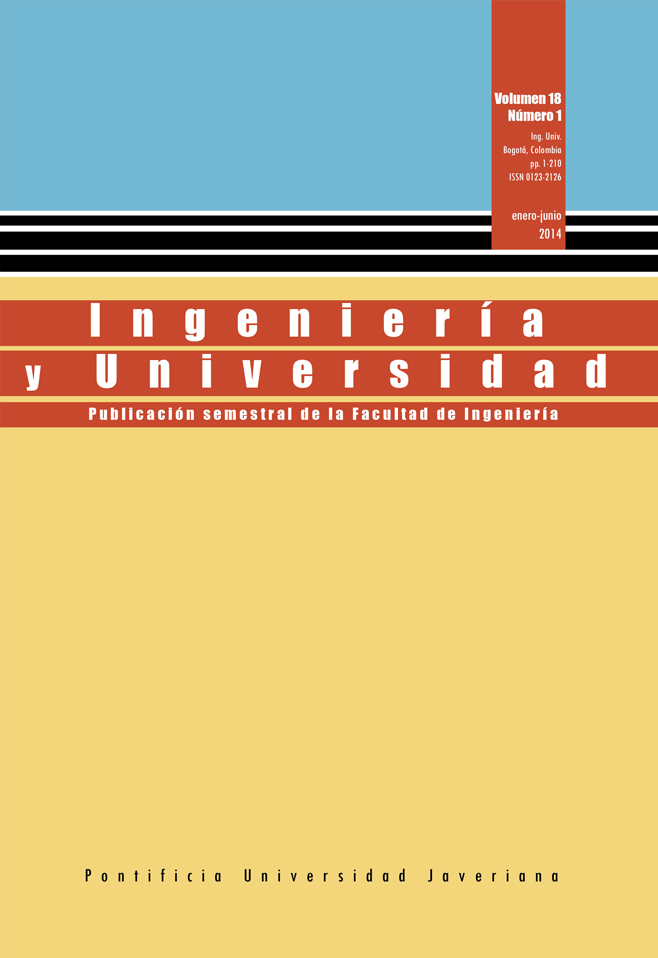Abstract
This research proposes a Bruxism rehabilitation system designed to achieve recovery without the need of mouth devices which tend to be annoying to patients. The system is based on the capture of neural signals by detecting brain activity related to Bruxism processes. For the detection of these events, we used an easy access, commercial, low-price Brain Computer Interface (BCI). The rehabilitation system generates an alert sound that prevents the patients’ teeth to wear down during the hours of sleep without awakening them.
CEJO, P. and LEGAL, L. Effects of the myofascial anchorage and muscular energy techniques in patients with bruxism. Revista Osteopatía Científica. 2011, vol. 6, no. 2, pp. 46-52.
CONSEJOS NATURALES. El bruxismo [document en línea]. http://www.consejosnaturales.com/el-bruxismo.html.
CROWLEY, K.; SLINEY, A.; PITT, I. and MURPHY, D. Evaluating a brain-computer interface to categorize human emotional response. IEEE International Conference on Advanced Learning Technologies. 2010, pp 276-278.
DE MACEDO, C. Placas oclusais para tratamento do bruxismo do sono: revisão sistemática Cochrane. Sao Paulo: Universidade Federal do São Paulo, 2007.
DELA, K. and DE QUEIROZ, J. Bruxismo na infância: fatores etiológicos e possíveis tratamentos. Revista de Odontologia da UNESP. 2006, vol. 35, no. 2, pp. 157-163.
DELGADO, M. and PUJOL, T. Infantile bruxism: an alarm signal. Revista Aten Primaria. 1996, vol. 17, no. 2, 172-173.
EGAN, G.F. Neuroinformatics: development of shared neuroscience databases and tools at the Australian National Neuroscience Facility. Proceedings 2004 IEEE International Joint Conference on Neural Networks. 2004, vol. 1, pp. 25-29.
FRUGONE, R. and RODRIGUEZ, C. Bruxismo. Av Odontoestomatol [online]. 2003, vol. 19, no. 3, pp. 123-130.
GÓMEZ, F. Can bruxism be useful the central nervous system to reduce stress? Gaceta Médica Bilbao. 2001, vol. 98, no. 4, pp. 113-116.
GONZÁLEZ, C. and LANTADA, A.D. A wearable passive force sensor powered by an active interrogator intended for intra-splint use for the detection and recording of bruxism. Pervasive Computing Technologies for Healthcare, 2009. Pervasive Health 2009. 3rd International Conference on, IEEE. 2009, pp.1-4.
GONÇALVES, L.P.; TOLEDO, O.A. and OTERO, S.A. Relação entre bruxismo, fatores oclusais e hábitos bucais. Dental Press Journal of Orthodontics. 2010, vol. 15, no. 2, pp. 97-104.
JAEN, F. El bruxismo, un mal que casi todos padecemos [document on line]. <http://www.saludpanama.com> [Cited: 04-06-2012].
JAUME, S.; KNOBE, K.; NEWTON, R.R.; SCHLIMBACH, F.; BLOWER, M. and REID, R.C. A multiscale parallel computing architecture for automated segmentation of the brain connectome. IEEE Transactions on Biomedical Engineering. 2012, vol. 59, no. 1, pp. 35-38.
KIM, J.H.; MCAULIFFE, P.; O’CONNEL, B.; DIAMOND, D.; LAU, K.T. Development of bite guard for wireless monitoring of bruxism using pressure-sensitive polymer. International Conference on Body Sensor Networks (BSN). 2010, pp. 109-116.
LUO, A. and SULLIVAN, T.J. A user-friendly SSVEP-based brain–computer interface using a time-domain classifier. Journal of Neural Engineering. 2010, vol. 7, no. 2, p. 26010.
MARTÍNEZ, A.; BARRIENTOS, A.; DÍAZ, A.; LAFONT, P.; COLORADO, J.; CASTEDO, P.L. and GONZÁLEZ, R. Polymeric piezoelectric sensors and remote communication for detection of bruxism. International Conference on Industrial Technology (ICIT), 2010 IEEE. 2010, pp. 268-273.
MARTÍNEZ, I.; TOLEDO, B.; PRENDES, T.; CARVAJAL, A.; DELGADO, T. and MORALES, A. Risk facts in patients with temporomandibular dysfunction. Revista Médica Electrónica. 2009.
MONCADA, L.; GALLARDO, I.; AGUILAR, L.; CONEJAN, C.; DREYER, E. and ROJAS, G. Bruxers presents a distinctive style of personality. Revista Chilena de Neuro-Psiquiatría. 2009, vol. 47, no. 2, pp. 105-113.
PALAZÓN, R.; BERROCAL, I. and CABAÑAS, J. Treatment of bruxism with botulinim toxin. Revista Rehabilitación. 2001, vol. 35, no. 4, pp. 253-255.
PALUMBO, A.; PACE, C.; FARELLA, M. and COCORULLO, G. An example of System on Chip design for biomedical applications: bruxism therapy. Instrumentation and Measurement Technology Conference Proceedings. 2007, pp. 1-3.
PÉREZ, M.; LEMUS, L.; ALMAGRO, S. and ROBLEDO, M. Rehabilitación protésica del bruxismo en el adulto. 16 de Abril. Revista Cubana de los Estudiantes de Ciencias Médicas [online]. 2002, vol. 41, no. 1. <http://bvs.sld.cu/revistas/abr/vol41_1_02/abr05102.htm> [Cited: 04-05-2012].
REVISTA BUENA SALUD. Soluciones para quienes padecen bruxismo [article online]. 2009. <http://www.revistabuenasalud.com/bruxismo-soluciones-para-quienes-rechinan-losdientes-al-dormir/> [Cited: 2012-04-20].
REY, A. Bruxismo. Diagnóstico control [document online]. 2010. <http://antonioreygil.blogspot. com/2010/06/el-bruxismo-es-considerado-un-trastorno.html> [Cited 04-20-2012].
SACOTO, M. Estadística sobre el bruxismo en adultos y niños [document online]. <http://mariansacotonavia. com> [Cited: 04-04-2012].
SAKAI, R.; YOSHIDA, H.; KAWAHATA, N.; KIKUCHI, M. and NAKAJIMA, I. Realization of anterior guidance with canine and occlusion by a mastication motion simulator. SICE 2004 Annual Conference. 2004, vol. 2, pp. 1715-1720.
SERRA, J.; PAIVA, S.; SEABRA, A.; DORELLA, C.; LEMOS, B. F. and PORDEUS, I.A. Prevalence of sleep bruxism in a group of Brazilian school children. European Archives of Paediatric Dentistry. 2010, vol. 11, no. 4, pp. 192-195.
STOPCZYNSKI, A.; LARSEN, J.; STAHLHUT, C.; PETERSEN M. and HANSEN, L. A smartphone interface for a wireless EEG headset with real-time 3D reconstruction. Affective Computing and Intelligent Interaction. 2011, pp. 317-318.
This journal is registered under a Creative Commons Attribution 4.0 International Public License. Thus, this work may be reproduced, distributed, and publicly shared in digital format, as long as the names of the authors and Pontificia Universidad Javeriana are acknowledged. Others are allowed to quote, adapt, transform, auto-archive, republish, and create based on this material, for any purpose (even commercial ones), provided the authorship is duly acknowledged, a link to the original work is provided, and it is specified if changes have been made. Pontificia Universidad Javeriana does not hold the rights of published works and the authors are solely responsible for the contents of their works; they keep the moral, intellectual, privacy, and publicity rights.
Approving the intervention of the work (review, copy-editing, translation, layout) and the following outreach, are granted through an use license and not through an assignment of rights. This means the journal and Pontificia Universidad Javeriana cannot be held responsible for any ethical malpractice by the authors. As a consequence of the protection granted by the use license, the journal is not required to publish recantations or modify information already published, unless the errata stems from the editorial management process. Publishing contents in this journal does not generate royalties for contributors.


